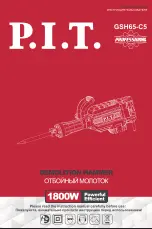
System Power Supply Crestron
CNPWS-75
4
••
System Power Supply: CNPWS-75
Operations Guide - DOC. 8091A
Wire Gauge Values
RESISTANCE (R)
WIRE GAUGE
4
16
6
18
10
20
15
22
13
24 (Doubled-CAT 5)
NOTE:
All network wiring must consist of two twisted-pairs. One twisted pair is
the +24V conductor and the GND conductor and the other twisted pair is the Y
conductor and the Z conductor.
NOTE:
When daisy chaining network units, always twist the ends of the incoming
wire and outgoing wire which share a pin on the network connector. After twisting
the ends, tin the twisted connection with solder. Apply solder only to the ends of the
twisted wires. Avoid tinning too far up or the tinned end becomes brittle and breaks.
After tinning the twisted ends, insert the tinned connection into the network
connector and tighten the retaining screw. Repeat the procedure for the other three
network conductors.
Hardware Hookup
The CNPWS-75 should be used in a well-ventilated area. The venting holes should
not be obstructed under any circumstances. If the power supply is hot to the touch,
consider using forced air ventilation or implementing additional supplies to distribute
the load.
Hookup Preparation
Prior to making hardware connections, it is assumed that all wiring is run. This
includes the connection of network connectors. However, the network connectors
should not yet be plugged into the network units. Use an ohmmeter to verify that
none of the four network conductors are shorted or crossed. Furthermore, each
network unit has its unique ID code set. If necessary, refer to the product
documentation for the appropriate ID code assignment procedure of each device.
Hookup Methods
The hookup diagram, below, illustrates the home run and daisy chain methods of
connecting the CNPWS-75. It also illustrates multiple CNPWS-75s within a single
Cresnet system. Only use the methods shown; do not connect multiple power
supplies together in parallel. If only one power supply is necessary, use either
method connected to a control system.






























